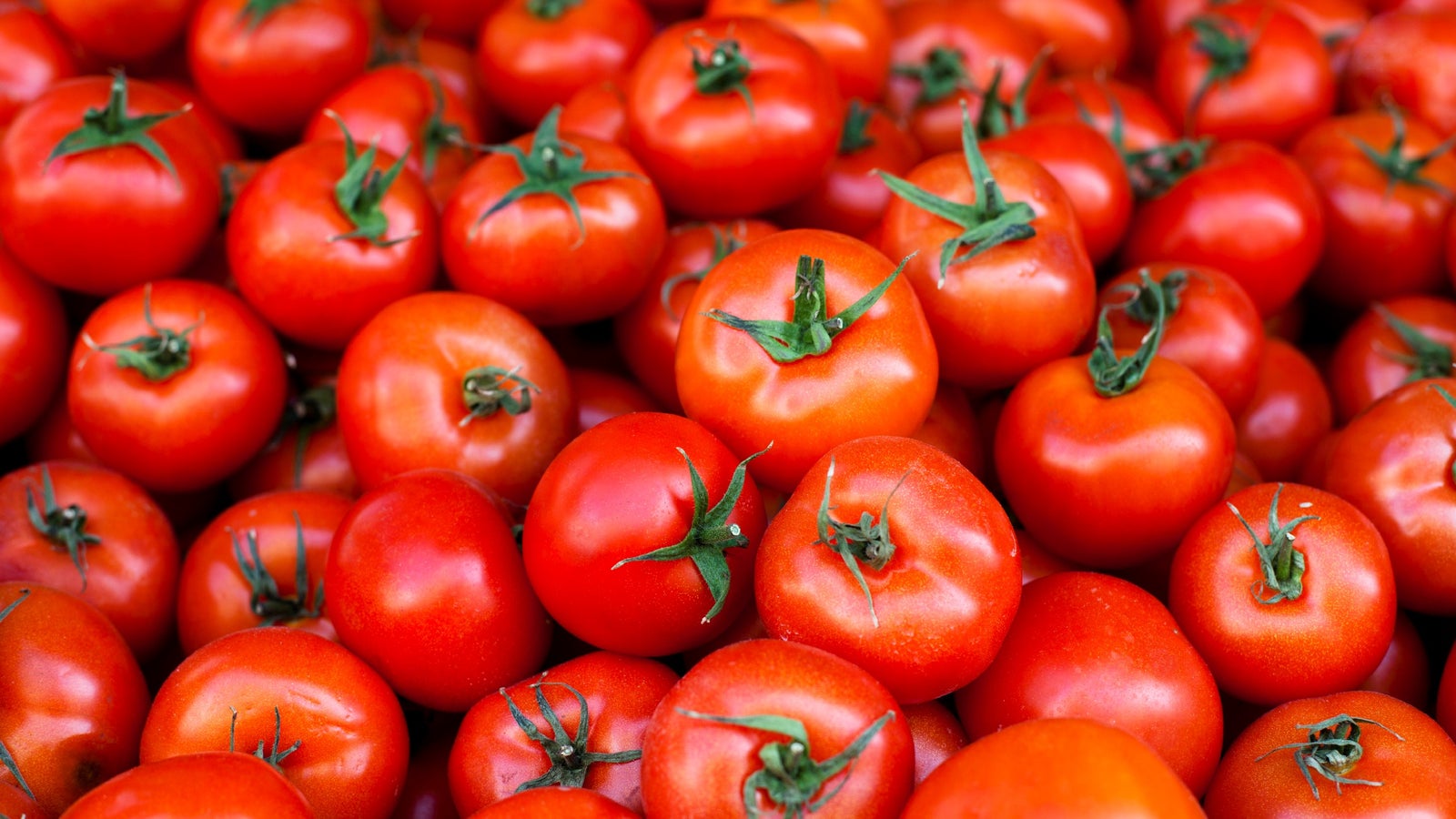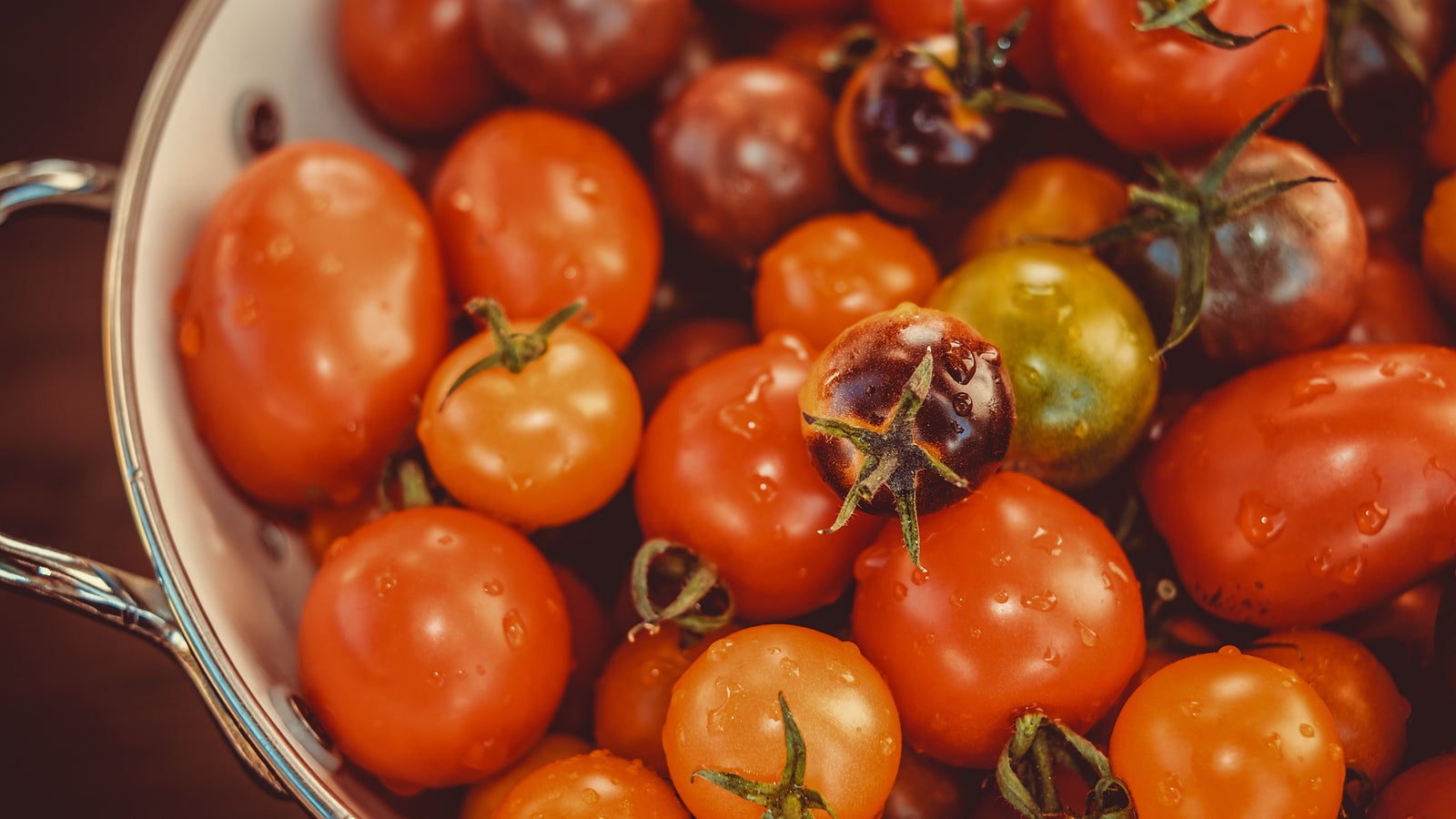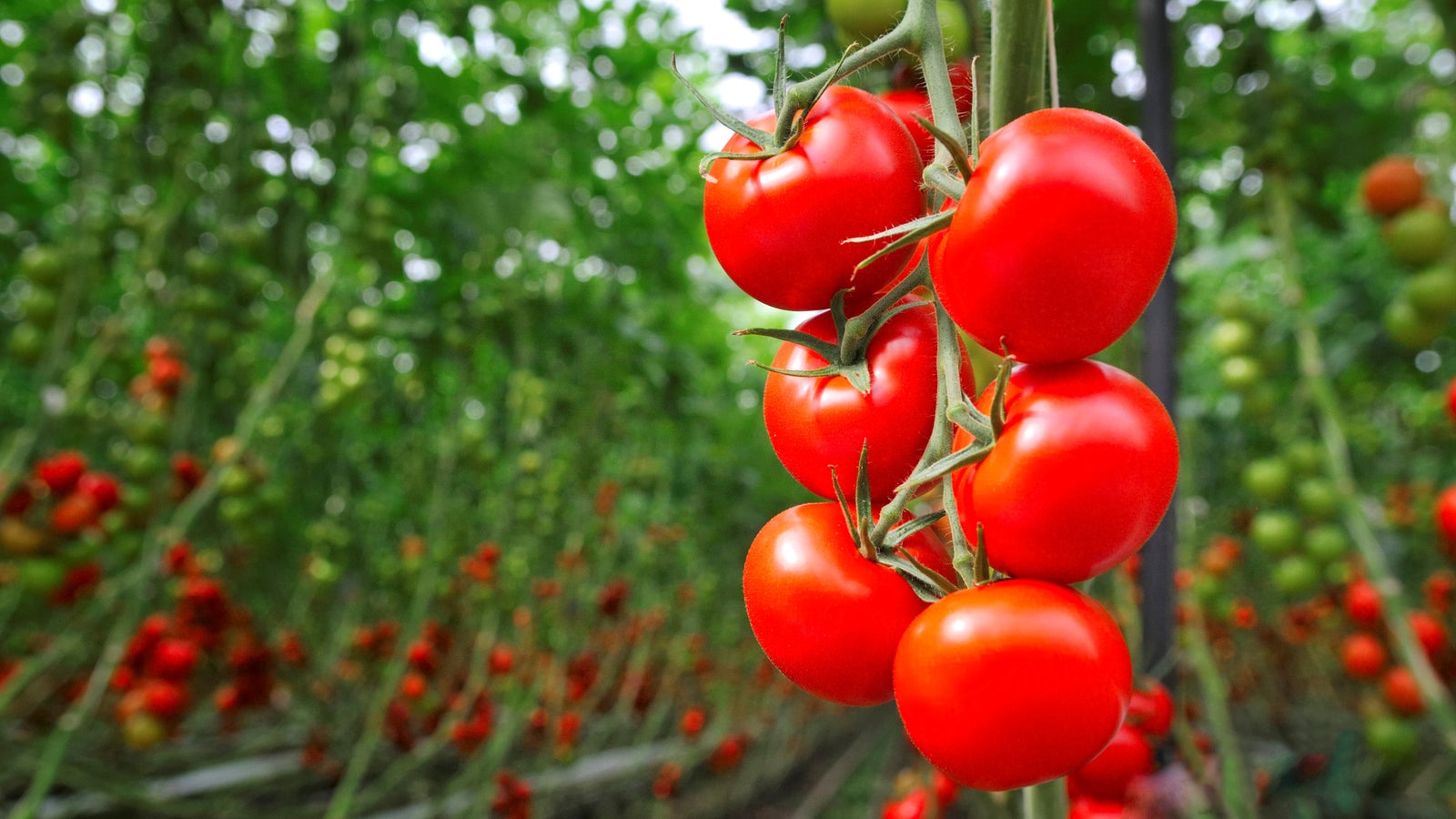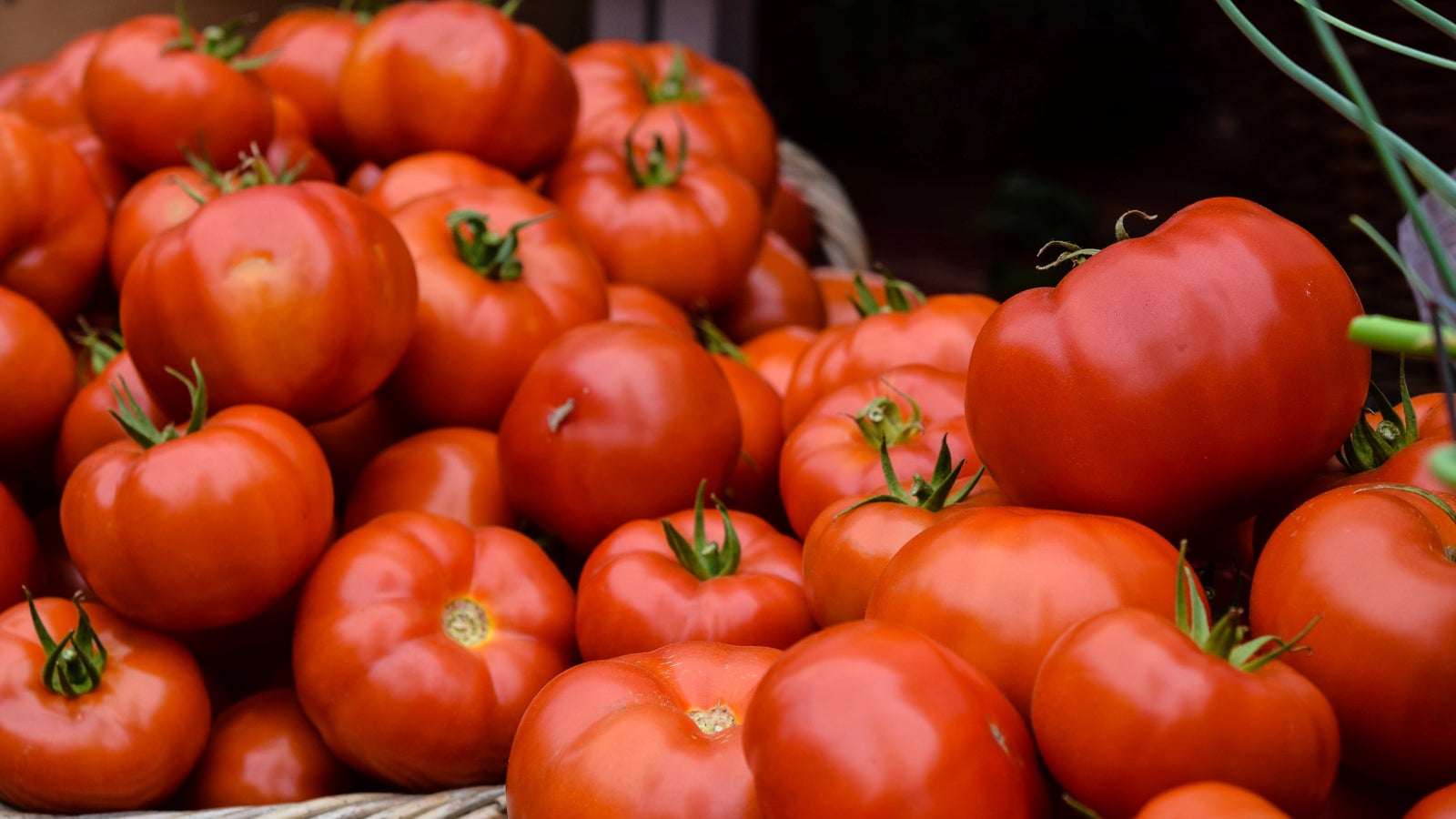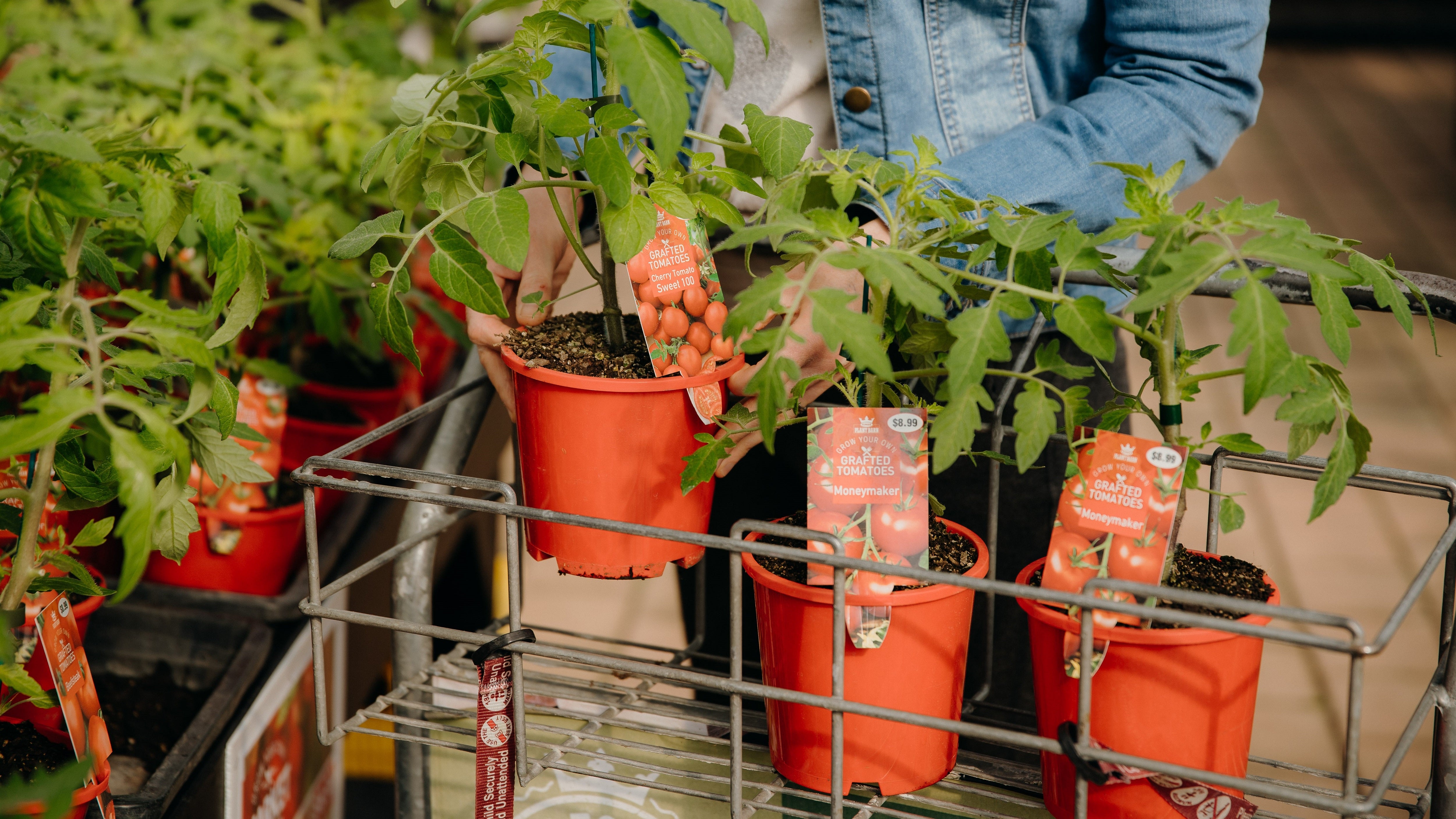
A Beginner's Guide to Growing Tomatoes
02 Oct, 2021
Seeds, seedlings or established plants?
First, you need to look at choosing how you will grow your tomatoes. It can be a little confusing when to sow seed, when to choose a seedling or when you are able to get established plants.
Sowing seeds
If you are living in a cooler climate such as the South Island, you will want to start sowing your seed indoors in July. Because Auckland is warmer for an extended season, you can start sowing your tomato seed in mid-to-late August.
Use seed-raising mix, gently water to dampen the soil then sow your seeds about 5cm apart.
Keep the seeds in a warm place until they germinate, then move them to a position in full sun, making sure that the soil is slightly moist at all times.
Once the plants have two to three pairs of true leaves, plant out into larger pots, or into the garden once temperatures have risen in mid-spring.
Growing seedlings
If you want to get a head start, you can plant tomato seedlings. They are available once the temperatures are warm enough for them to grow, usually in September.
There are 3 different seedling grades to select from. Our value seedlings are smaller plants, which include the standard tomato varieties in a punnet of 6 plants.
Super punnets are more mature with a larger roots system. There is more variety to select from, also in a punnet of 6 plants.
Growfresh Seedlings are selected for their proven performance in the Garden, and only the best tomato varieties make it into this range, often including heirloom varieties.
Large plants
These are more mature plants that have stronger stems, multiple leaves and some can even be found with flowers or fruit later in the season.
They start to arrive in stores from mid-September and there are plenty of varieties to choose from.
The advantage of buying mature plants is that they are generally faster growing; their roots will establish quickly and they'll produce fruit faster.
Grafted tomatoes will grow larger then your average tomato, having the capacity to be able to hold much more fruit. Grafted tomatoes are also more resilient to disease.
Tumbling tomatoes are smaller plants perfect for medium-sized pots on the deck and are almost ready for picking when they come in-store. There are large tomato plants for every type of garden!
Choosing your variety
Tomatoes come in a range of colours and sizes, with different tastes and culinary uses.
Here are our top tomato picks for this spring:
Beefsteak
Named for its thick, large, fleshy fruit, the beefsteak tomato is perfect for slicing and using in sandwiches and burgers. Give it a good 1.5m width to grow.
Sweet 100
Producing small, sweet cherry tomatoes the Sweet 100’s fruit are perfect for salads, kids lunch boxes, and eating right off the vine. They produce an abundance of fruit (this is where the ‘100’ comes from) from late spring through to late autumn.
Tumbler
Tumblers come in a range of red, orange and yellow fruit that are almost as sweet as the Sweet100’s.
They are perfect for small gardens and patios and happy in smaller containers and hanging baskets.
Money Maker
Your classic medium-sized tomato with juicy fruit. This is a prolific cropper and perfect for using in salads and fresh dishes. The plant has good resistance to disease.
Roma
Perfect for soups and sauces, Roma fruit are oblong instead of the classic round shape. Roma tomatoes ripen all at once, rather than throughout the season.They have good disease resistance and have less acid that many other tomatoes, though contrary to popular belief not technically low-acid tomatoes.
Grosse Lisse
Medium to large, sweet-tasting fruit with an excellent tomato flavour, these are perfect for cooking and using in preserves. Being an heirloom variety, the Grosse Lisse seeds are true to their parent plant and can be collected year after year.
Tomato Care
Now that you have chosen which tomatoes you are going to grow, you will need to give them the right care to help them flourish.
Here are some basic tips on how to plant and look after tomatoes:
Position
To grow to its full potential and have fruit that will ripen quickly, your plant will need to be in a position where it gets full sun, or at least six hours of full sunlight a day.
Rotate your crops each year, making sure you don’t plant them in the same place you had Solanum plants (tomatoes, potatoes and eggplants) the year before; this will lower the chances of getting blight or other diseases that stay in the soil.
Tomato vines do get top-heavy so they should be staked, held up by string if grown in greenhouses, or tied to a trellis.
Make sure your plants are out of harsh windy places, but still get a good amount of airflow.
Planting Tomatoes
Once you have chosen your variety and position it is time to transplant your plant into its forever home. Tomatoes can be grown in the garden, in a greenhouse or just in a pot on the deck or balcony.
In a pot
When growing in a pot you can control the make-up of the soil. Use either Kings Container Mix or Tomato Mix, as these contain water crystals that will help retain moisture for longer, as well as a slow-release fertiliser to feed your plants. Make sure you choose a large container for your tomato plants: at least 40L as tomato roots need a good amount of space to grow. Make sure your pot has drainage holes in the bottom, and if able keep a saucer under the pot so the plant can absorb the excess water in the summer months. The only downside to pots is that you will need to water them once a day in hot weather.
In the garden
After selecting the perfect position in your garden, make sure your garden soil is full of nutrients. Enrich the soil and improve its structure by digging in some Kings Organic Compost, Kings Sheep Pellets and some Natures Organic Fertiliser then mix together well. When planting your tomato in the ground, you will need to dig a hole twice as deep and twice as wide as the pot it comes in. To avoid fungal disease such as blight plant to allow airflow between plants. Backfill the rest of the hole around the plant, making sure you don’t cover the stalk with soil. Firm the soil and water deeply. Make sure to give tomato plants at least a meter between each plant.
In a greenhouse
If you are lucky enough to have a greenhouse set up for tomato growing, there are a few things you will want to consider. Remember to rotate your crop, and if you are unable to do this, you should take the top 50cm of old soil out and replace it with Veggie Mix. The advantage of having a greenhouse is that you can stop insects from attacking your ripening tomatoes, and it’s easy to tie them up using string from the roof, so they don’t need staking. Plus if you are growing from seed, you can start planting out your seedlings earlier than you would in an outside garden. However, you will need to make sure there is enough airflow to prevent fungal disease.
Feeding
Tomatoes are heavy feeders and once they have established themselves (four weeks or so after planting) you can start feeding them once every two weeks with Kings Liquid Tomato Food. Feed until the last fruit have been harvested in autumn. In addition a monthly application of Aquaticus Garden Booster will help produce strong healthy roots.
Watering
Only water around the roots, avoiding the leaves. This will mean your plant gets the maximum amount of water, and it will stop the leaves burning from magnified water in the summer heat. It will also help prevent future foliage diseases.
Pruning
To help channel energy into fruit and flower production rather than into extra foliage, you will need to remove side shoots or ‘lateral’ branches. These are found sprouting at any angle between the main stem and an already-formed branch. Left unchecked your tomato will become a massive jungle of stems that will either need supporting or will form an unkempt mess that tumbles everywhere.
Harvesting
Tomatoes are generally ready to eat when they have turned red on the vine, or depending on the variety, orange or yellow.
Harvest green tomato varieties such as Aunt Ruby’s German Green when the tomato is just starting to show a hint of colour at the base of the fruit. You can leave these out on the bench for a couple more days from harvest before eating.
Red, orange and yellow tomatoes can also be harvested when they have reached their full size but are still green.
Tomatoes produce a gas that starts to emit once they have reached this size and they will continue to ripen even after they have been harvested from the plant. Leave at least a small stalk on the fruit and leave the fruit out in a sunny window to help them ripen. Store with the stalk attached. If you have a surplus of tomatoes, freeze them to enjoy year-round.
Extra care tips
To encourage fruit to ripen faster on a truss, remove the leaves below it. This will let in more air and light. Once the bottom truss has ripened and been removed, move to the next truss and remove the leaves below it, and continue until the end of the harvest.
Putting Blood and Bone around your tomato plants in the garden will encourage larger trusses of flowers.
Companion plant tomatoes with basil plants, as this is said to improve the taste of tomatoes, as well as the vigour of the plants. It helps repels some insects as well.
Protect your tomato plants from psyllids and shield bugs in late summer by covering them with bug netting. We recommend you do this later in the season, so the bulk of your flowers have been pollinated.
